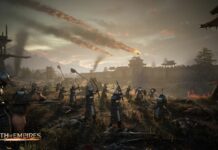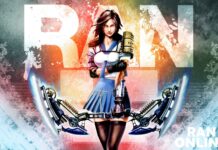Despite all of the hype about “Fortnite” and its “metaverse” of character crossovers, it is Nintendo’s “Smash Bros.” fighting game franchise that has established the industry’s largest rivalry squad.
Super Smash Bros. Ultimate has lived up to its hype as one of gaming’s biggest crossovers, and it’s becoming clear that nothing like it will ever be seen again.
The big picture: For “Smash,” Nintendo uses its strength as a prominent video game company to enlist partners and occasional competitors in order to boost the popularity of its own $60 game. Its popularity can also be attributed to the unique virgin code that allows gamers a redeemable online gambling experience.
The current vehicle for this is 2018’s “Super Smash Bros. Ultimate,” which will get another addition to its pool of fighters on Tuesday in the shape of Kazuya Mishima from Bandai Namco’s “Tekken” fighting game series.
Crossovers with Capcom’s “Devil May Cry,” Microsoft/”Skyrim,” Bethesda’s and WayForward’s “Shantae” series will also be included in the paid update, in the manner of costumes for the game’s most generic warriors, the doll-like Mii Fighters.
With the inclusion of “Tekken,” “Ultimate” now has a roster of fighters from 39 different series, including more than a dozen that aren’t created by Nintendo.
Epic’s strategy with “Fortnite” is to cram as many pop cultural symbols as possible — from gaming, movies, sports, music, and so on — into a structure that is ostensibly a 100-player firefight but can also be utilized as a communal area.
This results in a multi-branded playground that can also serve as a marketing launch pad for any company’s next game, film, record, or television show.
Because “Fortnite” is a free game, Epic isn’t selling any more copies. Instead, it’s tempting people to come back in, maybe buy a new outfit, and then see these crossovers as advertisements.
Between the lines: “Super Smash Bros.” debuted in 1999 on the Nintendo 64 as a fighting game starring several of Nintendo’s most well-known characters, but it has since evolved into a corporate barrier-breaking brawl.
Characters from Sega’s “Sonic The Hedgehog,” Square Enix’s “Final Fantasy” and “Dragon Quest,” Konami’s “Castlevania,” and others have appeared in recent releases.
Microsoft, which has supported current crossovers between “Banjo-Kazooie” and “Minecraft,” is one of Nintendo’s most active partners.
Nintendo prefers to cooperate with large corporations, although it has also collaborated with small businesses.
Shovel Knight from Yacht Club Games, Sans from Toby Fox, and Shantae from WayForward are all available in limited editions.
Thanks to active contributions of songs from the game’s various franchises, “Smash” is currently the medium’s largest library of gaming music.
The game will add 39 tracks from the “Tekken” series as a result of the addition of a “Tekken” character.
Over 1,000 tracks from over three dozen series, many of which are not Nintendo’s, are included on a fan website for “Ultimate.”
What comes next: Nintendo’s attempts to introduce downloadable characters to “Ultimate” will come to an end later this year, according to Smash Bros. producer Masahiro Sakurai.
Fans have been requesting a lengthy list of characters, including Sora from “Kingdom Hearts” and Nintendo’s own Waluigi.
Even if a fan’s dream character isn’t chosen, it’s possible that their character may appear as a Mii costume.




